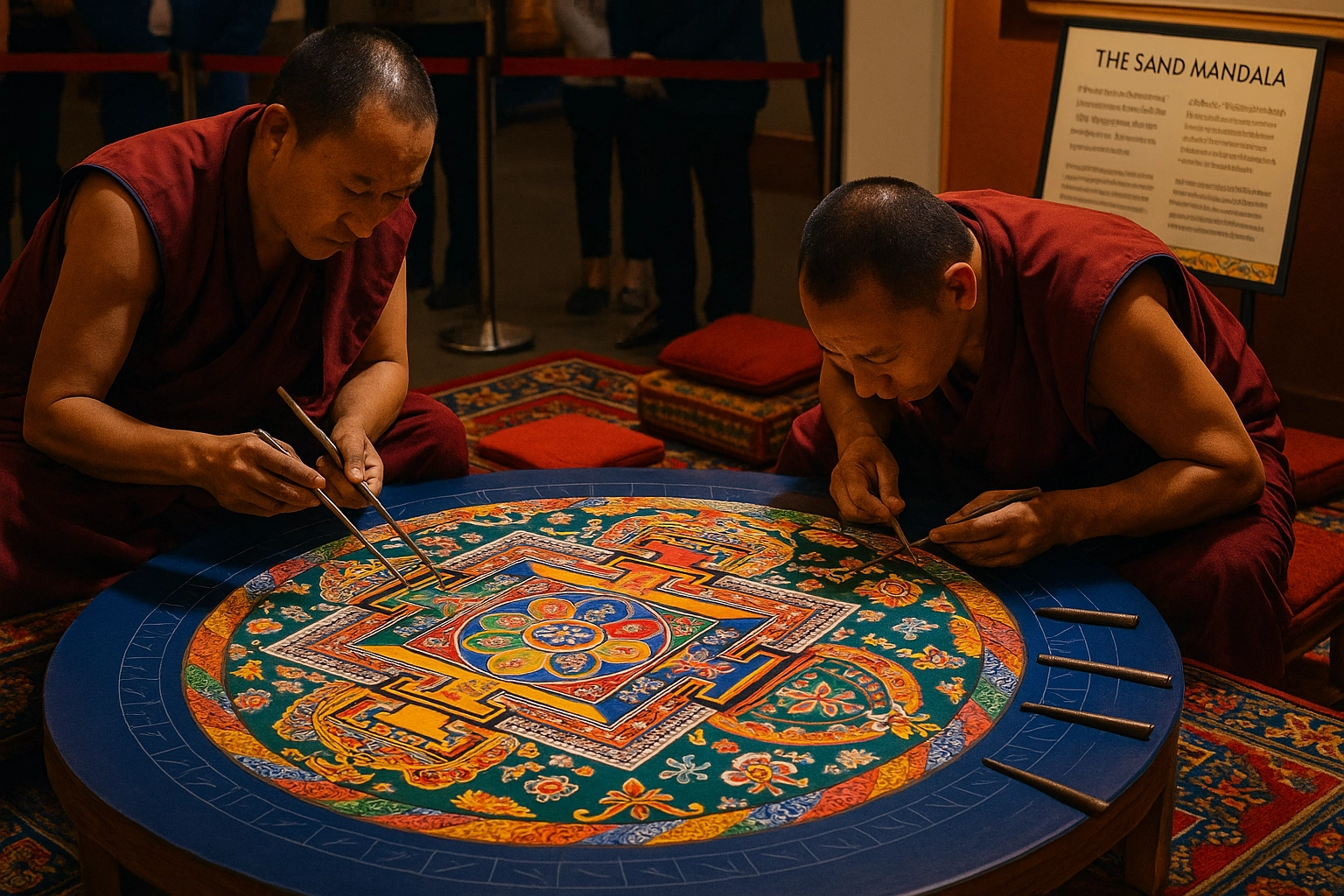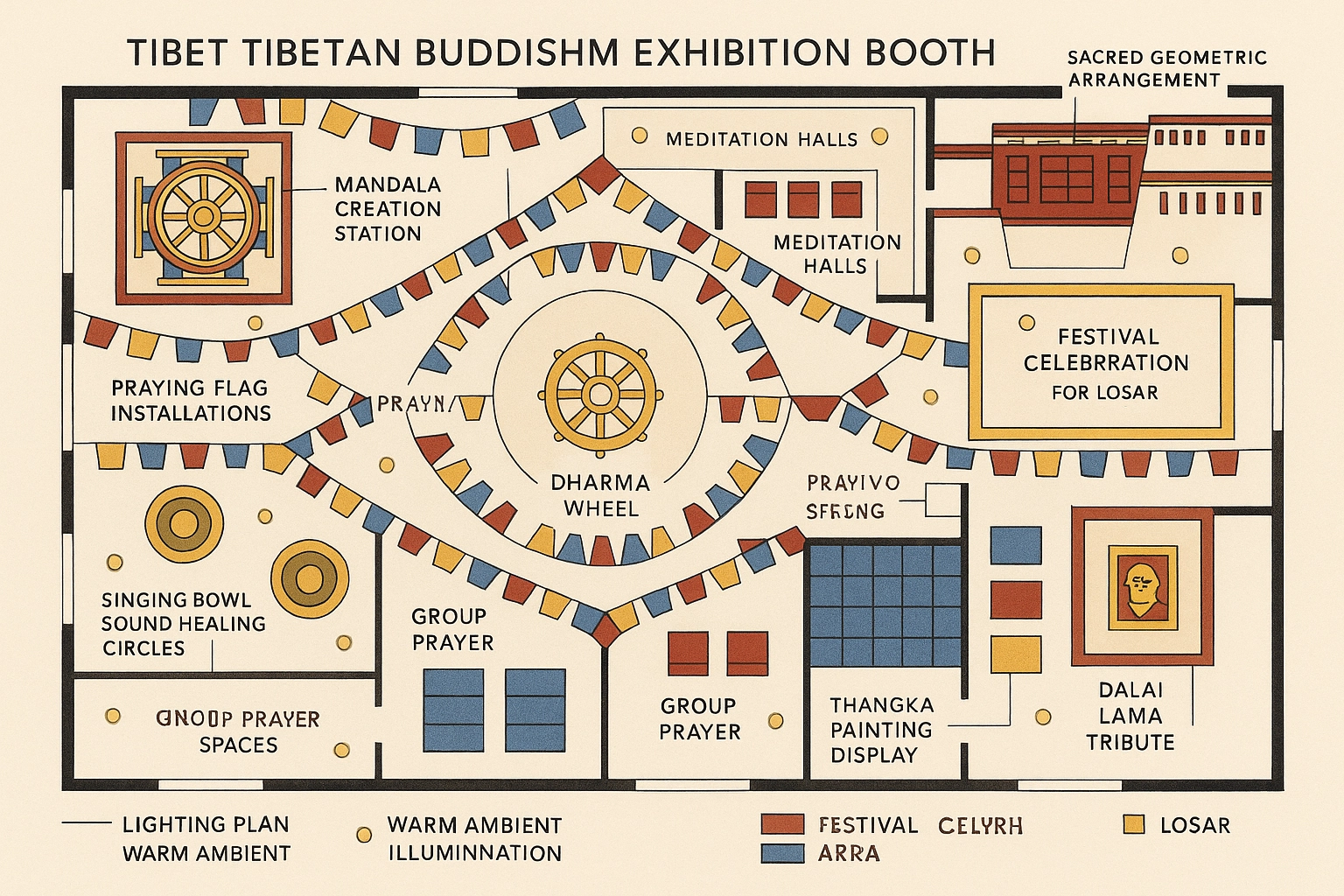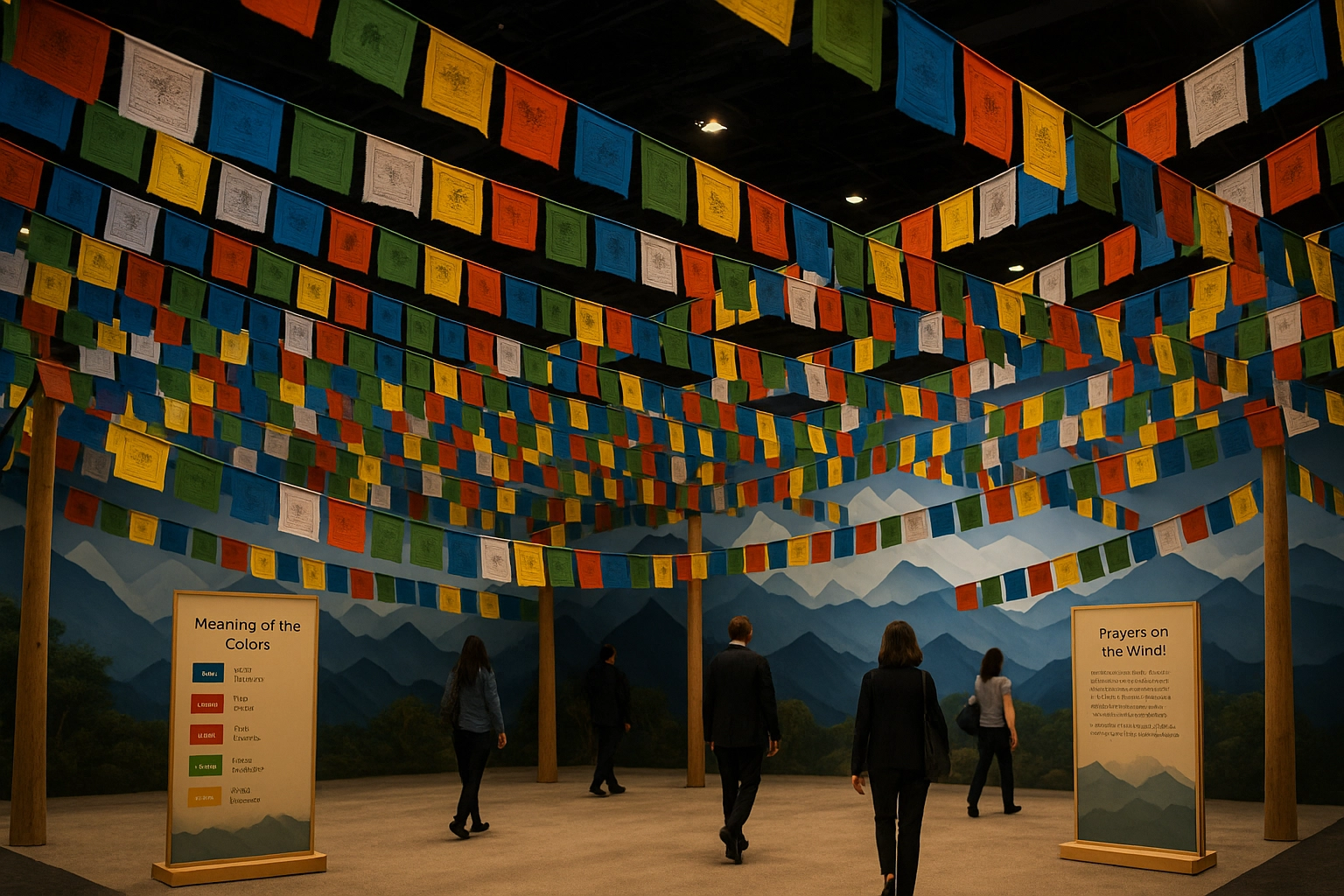Tibetan Buddhism Exhibition
Discover the profound wisdom and compassionate teachings of Tibetan Buddhism through our immersive exhibition experience
Exhibition Layout & Experience

Exhibition Floor Plan
Interactive layout featuring mandala spaces, prayer wheel areas, and meditation halls

Main Exhibition Hall
Featuring traditional thangka paintings, prayer flags, and authentic monastery artifacts

Sacred Mandala Gallery
Intricate sand mandalas and symbolic art representing the Buddhist universe
Historical Origin
Tibetan Buddhism, also known as Vajrayana or Lamaism, emerged in Tibet in the 7th–8th centuries CE. Its origins lie in the transmission of Mahayana and Tantric Buddhist teachings from India, as well as the integration of indigenous Bon spiritual practices.
Emergence & Development
The introduction of Buddhism to Tibet is traditionally credited to king Songtsen Gampo. Padmasambhava (Guru Rinpoche) played a key role in the 8th century, integrating Buddhist doctrine with indigenous traditions. Over centuries, it evolved into four main schools: Nyingma, Kagyu, Sakya, and Gelug.
Key Figures & Leaders
Padmasambhava (Guru Rinpoche)
Founder of Tibetan Buddhism's Tantric practices.
Je Tsongkhapa
Founder of the Gelug school, influential philosopher.
14th Dalai Lama (Tenzin Gyatso)
Global figure for peace and compassion.
Core Concepts & Beliefs
Bodhicitta
Universal compassion and aspiration for enlightenment.
Karma and Rebirth
Actions determine future lives in samsara.
Emptiness (Śūnyatā)
The true nature of reality, beyond inherent existence.
Tantric Practice
Rituals, visualization, and mantra for spiritual progress.
Fundamental Principles
Compassion (Karuna)
Active concern for the well-being of all beings.
Wisdom (Prajna)
Insight into the nature of reality and emptiness.
Mind Training (Lojong)
Transforming adversity into the path of awakening.
Guru Devotion
Respect and reliance on teachers as guides to enlightenment.
Sacred Symbols
Dharma Wheel (Dharmachakra)
Represents the Buddha's teachings and the Noble Eightfold Path.
Prayer Flags
Carry mantras and blessings on the wind.
Mandala
Symbolic diagrams used for meditation and rituals.
Eight Auspicious Symbols
Including conch, parasol, endless knot, and more.
Major Rituals & Ceremonies
Sand Mandala Creation
Ritual art expressing impermanence and compassion.
Mantra Recitation
Repetition of sacred syllables for spiritual benefit.
Puja Ceremonies
Group rituals to honor deities and generate merit.
Prayer Wheel Spinning
Sending out blessings through recitation of mantras.
Global Influence & Cultural Impact
Global Influence
Tibetan Buddhism has become a major force in global spirituality, influencing Western interest in meditation, compassion practices, and holistic well-being. The Dalai Lama is an international symbol of peace and interfaith dialogue.
Cultural Impact
Tibetan Buddhism shapes the identity, culture, and art of the Tibetan people. Monasteries have served as centers for education, medicine, and art. Buddhist values promote social cohesion and environmental reverence.
Geographical Spread
Practiced throughout Tibet, Bhutan, Nepal, Mongolia, and the Himalayan region. Significant communities exist in India (Dharamsala), Europe, the Americas, Russia, and Australia.
Important Spiritual Books & Texts
Kangyur
Canonical scriptures including the Buddha's teachings
The Tibetan Book of the Dead
Guide to the stages of dying and rebirth
Lamrim Chenmo
Great Treatise on the Stages of the Path to Enlightenment
Tengyur
Commentaries and treatises by later masters
Associated Holy Places & Structures
Potala Palace (Lhasa)
Historic winter residence of the Dalai Lamas.
Jokhang Temple (Lhasa)
Holiest site in Tibetan Buddhism.
Mount Kailash
Sacred pilgrimage mountain in western Tibet.
Samye Monastery
The first Buddhist monastery in Tibet.
Heritage & Legacy
Tibetan Buddhism's legacy includes its living traditions of monasticism, meditation, sacred arts (thangka painting, mandalas, chanting), and a rich corpus of spiritual literature. Its monasteries, art, and festivals are UNESCO World Heritage treasures. The preservation of Tibetan Buddhism in exile has led to a global renaissance of Tibetan art, music, and spiritual teaching.
Memorable Quote
"Our prime purpose in this life is to help others. And if you can't help them, at least don't hurt them."— 14th Dalai Lama (Tenzin Gyatso)